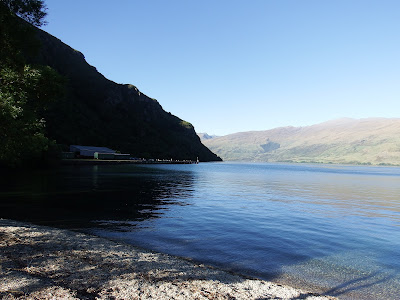Perth is close to a seven hour flight from Auckland. We traversed the southern reaches of Australia to get there. It is the capital of Western Australia, a progressive city which has enjoyed relative prosperity due to the resource rich outback yet also subject to the ebb and flow of world demand for minerals and precious metals. The skyline is dominated by mining conglomerates, with one trying to outdo the other for emminence.

It claims to have the highest per capita of self made millionaires of any city in the world. The prosperity is evident in the beauty of the city spreading along the coast and inland hugging the Swan River. As well as being the most isolated capital city in the world, Perth is the sunniest. This sun drenched city enjoys more sunshine which is reflected in the very warm summer temperatures, but wonderful when we were there in April.
 This is another city with a strong mariner tradition. The seaport at Fremantle is an example of engineering ingenuity.. The project involved blasting and dredging of the rocky bar to create a channel, dredging to deepen the river basin and construction of two moles to protect the entrance to the harbour. The scheme also involved land reclamation to allow for the construction of quays and warehouses.
This is another city with a strong mariner tradition. The seaport at Fremantle is an example of engineering ingenuity.. The project involved blasting and dredging of the rocky bar to create a channel, dredging to deepen the river basin and construction of two moles to protect the entrance to the harbour. The scheme also involved land reclamation to allow for the construction of quays and warehouses.
the Inner Harbour was marked by the entry of the SS Sultan, a 2063-ton steamer on the Fremantle to Batavia and Singapore run.
While the harbour has been deepened,
 Kings Park is said to be one of the largest inner city parks in the world. We spent most of one afternoon traversing this beautiful green oasis.It lies on high ground offering a spectacular view of the city and inner harbour.
Kings Park is said to be one of the largest inner city parks in the world. We spent most of one afternoon traversing this beautiful green oasis.It lies on high ground offering a spectacular view of the city and inner harbour.

and facilities extended and modernized
over the years, the basic structure of
the Inner Harbour remains essentially
unchanged to this day, testament to
the boldness, brilliance and foresight
of its designer.
 Kings Park is said to be one of the largest inner city parks in the world. We spent most of one afternoon traversing this beautiful green oasis.It lies on high ground offering a spectacular view of the city and inner harbour.
Kings Park is said to be one of the largest inner city parks in the world. We spent most of one afternoon traversing this beautiful green oasis.It lies on high ground offering a spectacular view of the city and inner harbour.
The land on which Perth lies now, was once
known as Boorloo. Boorloo formed part of
Mooro, the tribal lands of Yellagonga, whose
group was one of several who lived around
the Swan River, known as the Whadjug. The
Whadjug was a part of the greater group of 13
or so dialect groupings which comprised of
We spent most of our time
training in Zone Conferences or meeting with missionaries.
President Fife is an engaging and energetic leader and provided excellent instruction. I had a clear impression the missionaries were in good hands under his able leadership. We stayed in the Mission home and enjoyed their hospitality in their comfortable and spacious home.

On the day we had some time the Combs from Calgary, Alberta took us around Perth. He was born and raised in Perth and knew the best places to take us. Their assignment is supporting missionaries whose second language was English. This was the first senior couple who set a walking pace that even I had to adapt to. A wonderful couple!

































